Fire Safety: Testing Your Smoke Detector [by WikiHow]
Fire safety is essential, whether you own or rent your home. On average, seven people die every day in the US as a result of house fires. Though that number is high, the widespread use of home smoke detectors has resulted in a significant decrease in the number of house fire-related deaths and injuries. Installing a smoke detector is an inexpensive way to protect you and your loved ones from getting caught in a dangerous situation. It is important to remember, though, that smoke detectors can only help you if they are functioning properly. If not maintained properly, your smoke detector could fail you when you need it most.
Performing A Smoke Alarm Safety Test
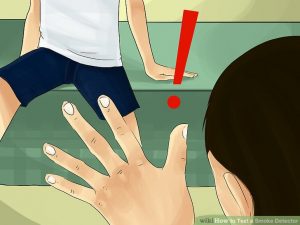
Warn family members.
Unless you are trying to conduct a fire drill, you should let everyone in the home know that you will be testing the smoke detector so that they will not feel frightened when the detector goes off.
If your smoke detector is hardwired to a monitored security system, be sure to notify the security system’s company that you are performing a test before you test the alarm. You don’t want the fire department showing up at your door!
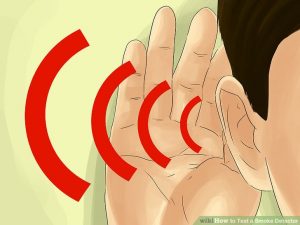
Ask someone to help you.
When testing an alarm, it will sound loud to you because you are going to be standing directly underneath it. However, you may also want to be sure that your detector is loud enough that anyone in any room in the home can hear it. Remember, it has to be loud enough to awaken the deepest sleeper in the household.
Ask them to stand in the room farthest away from the detector when you are testing it. They may also try standing outside the house to see if it is possible to hear it from outside.

Test the power.
Many smoke detectors are equipped with a light that indicates the unit is receiving power. However, you should still use the test button to ensure that the alarm will sound properly. You can do this by pushing and holding the test button for a few seconds.
When you push the test button, the alarm should sound. If it doesn’t, you know that your detector is not receiving power. You may need to replace the batteries, or call an electrician to check the wiring if your detector is hardwired. You can stand on a chair or ladder to reach the alarm with your hand, or you can use a broom handle to push the button. Some detectors will turn off on their own after a few seconds, while others may be turned off by pushing the test button again.
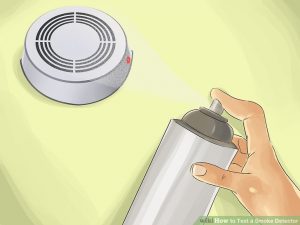
Check the smoke sensor using an aerosol spray.
In addition to making sure that the unit is receiving power properly, you will want to make sure that the detector’s smoke sensor is working correctly, too. You can purchase an inexpensive aerosol spray, which is designed specifically for testing smoke detectors. If your alarm does not sound when you use this product as directed by the manufacturer, the sensor in your detector may be worn out. If this is the case, replace your detector immediately.
Follow the directions as stated on the can.
You can usually purchase these for a few dollars in a hardware or home improvement store.
To turn off the alarm after testing, you can use a small hand-held vacuum to suck the test material away from the detector. Some detectors may also have a “silence” button that you can push to stop the alarm. Avoid waiting for the detector turn off on its own, as this may drain the battery.
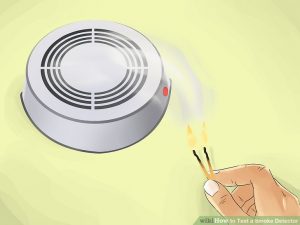
Test the smoke sensor using real smoke.
You can also use real smoke to test the smoke sensor. To do this, light two or three matches, and hold them together a few feet underneath the detector. The smoke from the matches should cause the alarm to sound if the detector is functioning properly. If it doesn’t sound, replace the detector immediately.
Be sure to keep the matches a few feet away from the detector, otherwise you risk melting or damaging it. As with the aerosol, you can use a vacuum to suck the smoke away from the detector, or push the silence button if your detector has one.
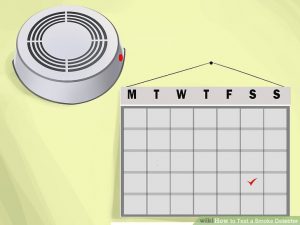
Test your detector at least once each month.
Some recommend testing your detectors each week. Obviously it is better to check them more frequently, so do it each week if you can. If you can’t, then be sure to plan a time each month to check each smoke detector.
Checking your alarm often means you are likely to catch a malfunctioning detector quickly; thus, you are more likely to have a properly functioning detector when you need it. Setting aside 30 minutes to an hour once each month to check each detector all at once will be more efficient than checking each alarm at different intervals.
